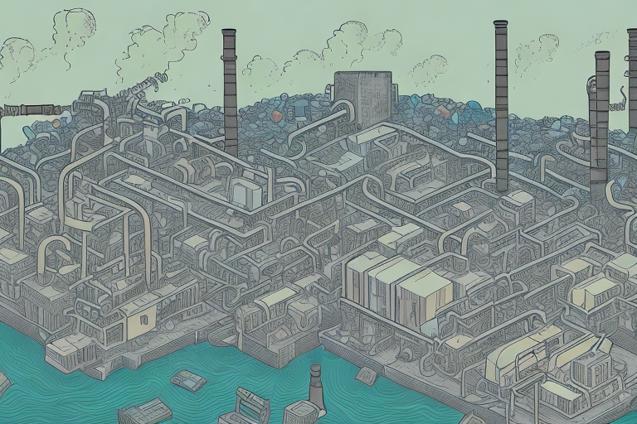
Discover the impact of human activity on marine ecosystems and how sailors can minimize their footprint to protect these vital environments for future generations.
The Impact of Human Activity on Marine Ecosystems
As we embark on our sailing adventures, it’s essential to recognize the impact our actions have on the marine ecosystems we encounter. The ocean is a vast and complex environment, teeming with life and providing essential resources for our planet. However, human activities have significantly altered these ecosystems, leading to a decline in marine biodiversity and the overall health of our oceans. In this article, we will explore the various ways human activity impacts marine life and discuss how we, as sailors and ocean enthusiasts, can minimize our footprint and protect these vital ecosystems.
Overfishing and Bycatch
One of the most significant threats to marine life is overfishing. Overfishing occurs when fish are caught at a faster rate than they can reproduce, leading to a decline in fish populations. This not only affects the targeted species but also disrupts the balance of the entire marine ecosystem. As certain species decline, their predators and prey are also impacted, leading to a cascade of effects throughout the food web.
Bycatch, the unintentional capture of non-target species, is another significant issue associated with fishing. Bycatch can include marine mammals, sea turtles, seabirds, and other fish species. These unintended catches can cause severe injury or death to the captured animals and contribute to the decline of already vulnerable populations.
What Can We Do?
As sailors and consumers, we can make a difference by supporting sustainable fishing practices and choosing seafood that is responsibly sourced. Look for certifications such as the Marine Stewardship Council (MSC) or the Aquaculture Stewardship Council (ASC) when purchasing seafood. Additionally, consider reducing your overall seafood consumption and opting for plant-based alternatives when possible.
Pollution and Marine Debris
Pollution from various sources, including agricultural runoff, industrial waste, and sewage, can have devastating effects on marine ecosystems. These pollutants can introduce harmful chemicals and nutrients into the ocean, leading to issues such as eutrophication, ocean acidification, and the contamination of marine life.
Marine debris, particularly plastic waste, is another significant threat to our oceans. It’s estimated that 8 million metric tons of plastic enter the ocean each year, posing a severe risk to marine life. Animals can become entangled in debris or ingest it, leading to injury or death. Additionally, plastic waste can break down into microplastics, which are ingested by marine organisms and can make their way up the food chain, ultimately impacting human health.
What Can We Do?
To minimize our impact on marine ecosystems, we must be conscious of our waste and pollution. As sailors, ensure that you properly dispose of all waste, including sewage, and avoid using single-use plastics whenever possible. Opt for reusable items and eco-friendly alternatives, such as biodegradable cleaning products and non-toxic antifouling paint for your boat.
On a broader scale, support policies and initiatives aimed at reducing pollution and waste, such as plastic bag bans, recycling programs, and wastewater treatment improvements.
Habitat Destruction
Human activities, such as coastal development, dredging, and bottom trawling, can lead to the destruction of essential marine habitats. Coastal development can result in the loss of vital ecosystems, such as mangroves, seagrasses, and salt marshes, which provide essential nursery grounds for many marine species. Dredging and bottom trawling can cause significant damage to the seafloor, destroying habitats and disrupting the balance of marine ecosystems.
What Can We Do?
As sailors, we can minimize our impact on marine habitats by practicing responsible boating. Avoid anchoring in sensitive areas, such as seagrass beds or coral reefs, and use mooring buoys when available. Additionally, support the establishment and management of marine protected areas (MPAs), which can help protect essential habitats and promote the recovery of marine ecosystems.
Climate Change and Ocean Acidification
Climate change, driven by human activities such as the burning of fossil fuels, is causing significant changes to our planet’s oceans. Rising sea temperatures can lead to coral bleaching, the loss of sea ice, and shifts in the distribution of marine species. Additionally, the increased absorption of carbon dioxide by the ocean is causing ocean acidification, which can have severe impacts on marine life, particularly shell-forming organisms.
What Can We Do?
To combat climate change and ocean acidification, we must reduce our greenhouse gas emissions. As sailors, consider investing in renewable energy sources for your boat, such as solar panels or wind generators. Additionally, support policies and initiatives aimed at reducing greenhouse gas emissions and transitioning to a low-carbon economy.
Invasive Species
The introduction of non-native species to marine ecosystems, often through human activities such as shipping and aquaculture, can have significant impacts on native species and habitats. Invasive species can outcompete native species for resources, alter habitats, and introduce diseases, leading to declines in native populations and disruptions to the balance of marine ecosystems.
What Can We Do?
To prevent the spread of invasive species, ensure that your boat’s hull is clean and free of fouling organisms before traveling to new areas. Additionally, be cautious when releasing any live bait or aquarium species, as these can introduce non-native species to local ecosystems.
Conclusion
As sailors and ocean enthusiasts, we have a responsibility to protect the marine ecosystems we encounter during our adventures. By being conscious of our actions and making informed choices, we can minimize our impact on these vital environments and help preserve them for future generations. Together, we can ensure that our oceans remain healthy and teeming with life, allowing us to continue enjoying the freedom and fulfillment that comes from embracing the open sea.